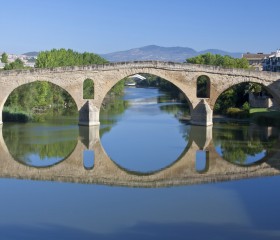UNESCO has agreed an extension to the routes of the Camino de Santiago and has now called it ‘the Camino de Santiago routes of northern Spain’. The extension to the routes of the Camino de Santiago represents a network of almost 1,500 km: coastal, interior of the Basque Country–La Rioja, Liébana and pilgrim routes.
The Camino de Santiago routes include ancient cathedrals, churches, hospitals, hostels and even bridges created to meet the needs of pilgrims. The extension to the Camino de Santiago routes encompasses some of the earliest pilgrimage routes to Santiago de Compostela. The importance of the routes follows the discovery in the 9th century of a tomb believed to be that of St. James the Greater.
To be accepted by UNESCO as a world heritage site a place must be outstanding and unique in terms of biodiversity, nature, landscape or endangered species for natural heritage sites, or amazing feats of architecture or beauty or strong links to major eras in human civilisation, art or literature.
Spain already has 44 cultural and natural heritage sites scattered throughout the country and on the Santiago de Compostela route includes the Burgos cathedral and the old town of Santiago de Compostela.










